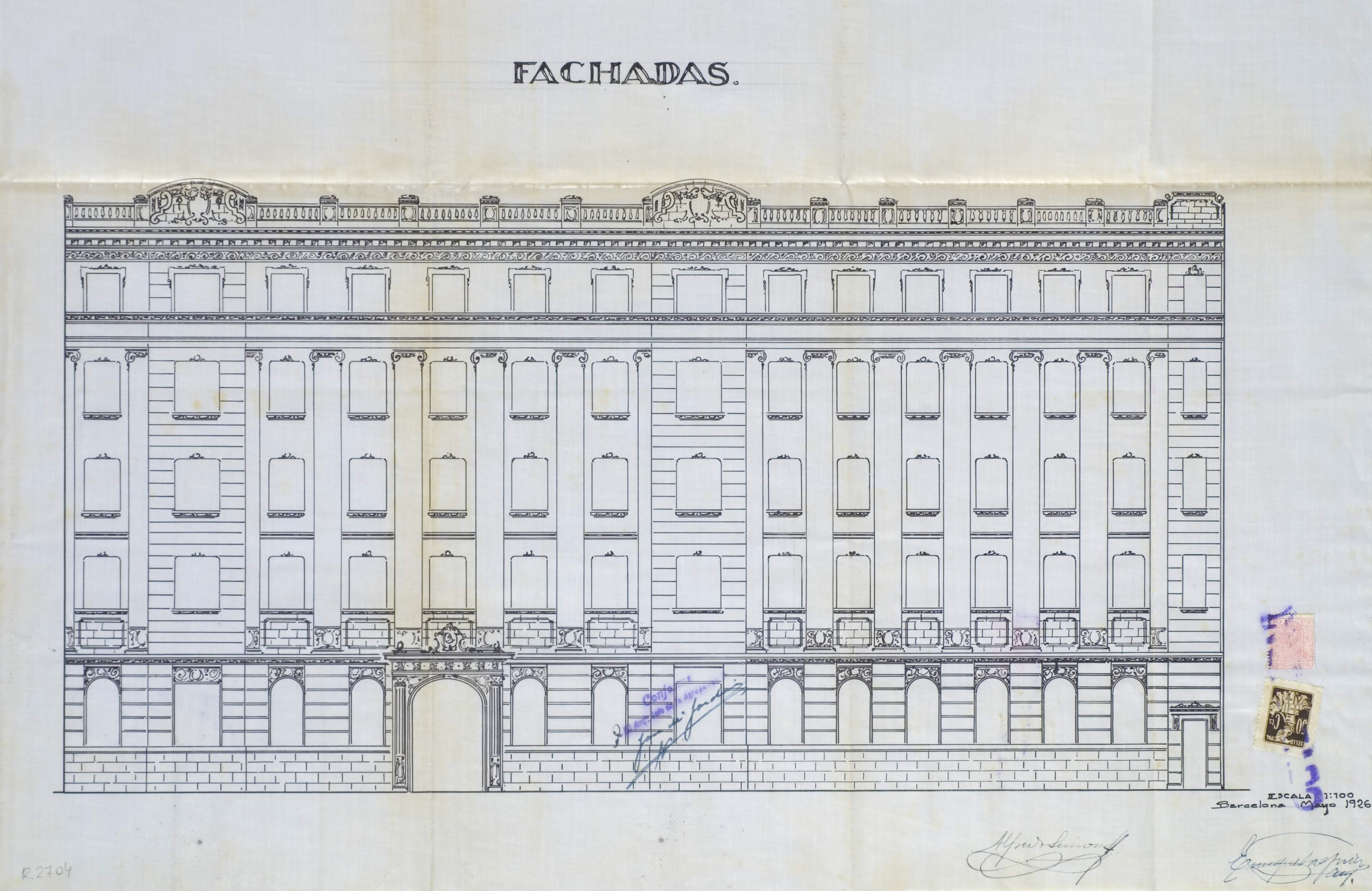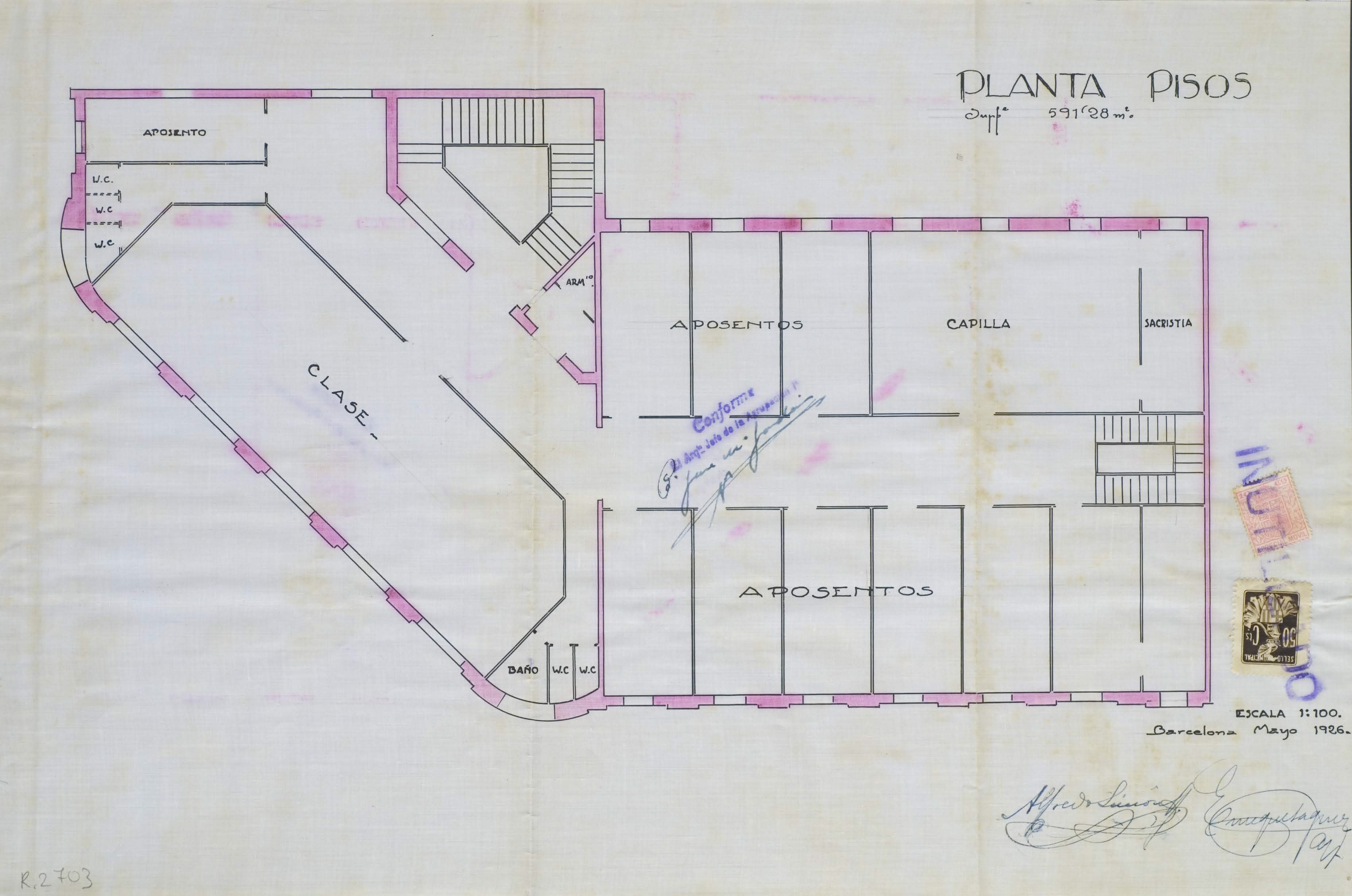Who we are
A school that offers training based on research and scientific knowledge of the university, and on the experience and innovation of the professional world.
History of the Balmes building
In 1926, Enric Sagnier Villavecchia built the Balmes Building on a plot that was once home to the Frontó Condal, designed by Francesc Rogent and inaugurated in 1896. The fronton, a venue used to play Basque pelota, was in use until 1924, when it was demolished. In 1926, the Jesuits bought the land for their Institut Comercial Immaculada, a business school previously located on Carrer Casp. In 1953, the building was taken over by the Fòrum Vergés, a cultural centre also belonging to the Society of Jesus that became a social and cultural epicentre in Barcelona during the Franco regime. In 1987, the Fòrum Vergés building was sold to a company formed by stockbrokers’ widows, and three years later, after plans to turn it into the headquarters of the Barcelona Stock Exchange or a four-star hotel failed, the Generalitat bought it, with a view to establishing Catalonia’s fourth university. So, in 1990, work to renovate the building for use as a university began and, on 8 October of the same year, the first year of Pompeu Fabra University began in the classrooms of the Balmes Building, with 316 new arrivals studying Law and Economic and Business Sciences.
In 1992, Jaume Llobet and Josep Benedito took on the work to extend the building, adding on the adjacent building on Carrer Balmes and creating a modern building that aimed to blend in aesthetically with the old construction. In 1997, it began to host the Continuing Education Institute, which currently goes by the name of UPF Barcelona School of Management.
Enric Sagnier Villavecchia
Sagnier, named a marquis in 1923 by Pope Pius XI, was an architect from Barcelona. As arguably the city’s most prolific architect, he designed and built nearly 300 buildings in Barcelona alone. His eclectic, classical style displays characteristics of Modernism through the lens of his unique, formal, sober interpretation. Thanks to his connections within Barcelona’s elite classes, Sagnier received numerous commissions from the bourgeoisie and the Church. Despite falling somewhat into popular obscurity in the second half of the 20th century, he designed iconic buildings such as the Palau de Justícia in Barcelona, the Jesús i Maria dels Salesians school on Passeig de Sant Gervasi, the Temple Expiatori del Sagrat Cor at the peak of Tibidabo, Casa Arnús at the bottom of the funicular on Plaça Doctor Andreu, and the headquarters of the Caixa de Pensions de Barcelona, on Via Laietana.
If you would like to know more about Enric Sagnier:
http://www.enricsagnier.com/
https://es.wikipedia.org/wiki/Enric_Sagnier#cite_note-33
https://ca.wikipedia.org/wiki/Enric_Sagnier_i_Villavecchia


